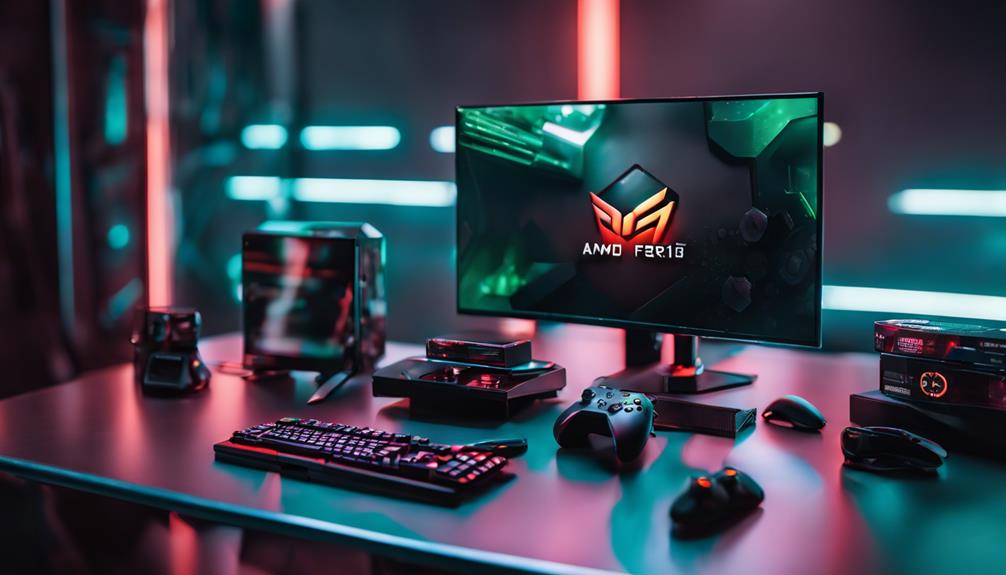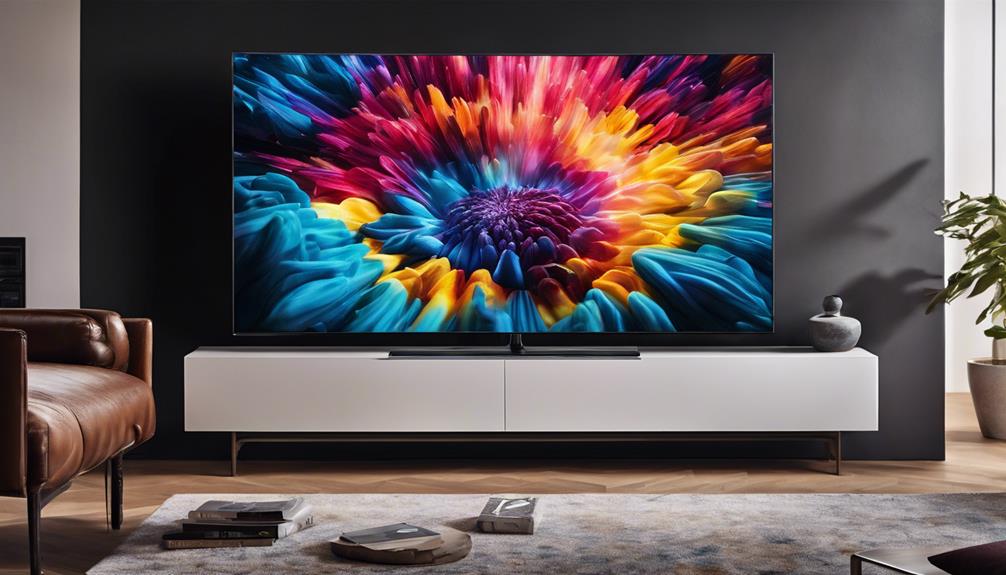AMD has confirmed that FidelityFX Super Resolution 2.0 will be compatible with Xbox consoles and will also extend support to various Nvidia graphics cards like the GeForce RTX 1070 and higher models, offering enhanced gaming experiences. This advancement signifies a significant step forward in gaming technology, promising improved visual quality, performance, and smoother gameplay for users across different platforms. Those interested in maximizing their gaming experiences can explore the benefits of FSR 2.0 on Xbox and Nvidia GPUs, opening up new possibilities in the domain of gaming technology. Further details on this promising development await discovery.
Key Takeaways
- FSR 2.0 seamlessly integrates with Xbox consoles for enhanced gaming.
- AMD confirms FSR 2.0 compatibility with Nvidia GPUs like GeForce RTX 1070 and higher.
- FSR 2.0 boosts GPU performance on Xbox and specific Nvidia models.
- FSR 2.0 introduces quality modes for customizable image enhancement.
- RSR, a part of AMD's features, supports FSR on AMD Radeon RX 5000 series GPUs.
FSR 2.0 Compatibility With Xbox
FSR 2.0 will seamlessly integrate with Xbox consoles, enhancing the gaming experience for a broader audience. With AMD confirming compatibility, Xbox gamers can look forward to improved visuals and smoother performance through FSR 2.0 technology.
This integration opens up new possibilities for developers to incorporate FSR 2.0 into their titles using the Xbox GDK. While specific details on the timeline remain limited, the promise of enhanced gaming experiences on Xbox consoles is a significant development.
As the release date for FSR 2.0 approaches, more information is expected to highlight the benefits that this technology will bring to Xbox gamers. By leveraging AMD's support, FSR 2.0 aims to elevate gaming experiences on the Xbox platform, catering to a wider audience and pushing the boundaries of visual quality and performance.
Stay tuned for updates as the collaboration between AMD and Xbox continues to evolve, promising exciting advancements in the gaming industry.
Nvidia Graphics Cards Support
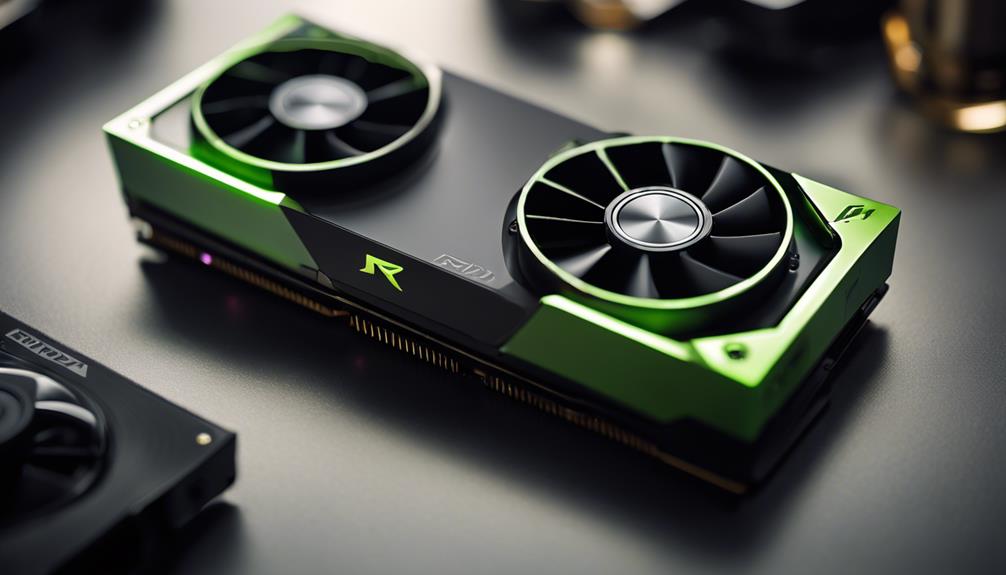
Nvidia graphics card users, from the GeForce RTX 1070 and higher models to the GTX 16 and GTX 10 series, can expect full support for FSR 2.0, enhancing their gaming performance without the need for specialized machine learning hardware. This means that Nvidia GPU owners are in for a treat as they explore the world of improved gaming experiences with AMD's FSR 2.0.
Here's what Nvidia users can look forward to:
- Wide Compatibility: FSR 2.0 will extend its support to a broad range of Nvidia GPUs, ensuring that many users can benefit from its performance upgrades.
- Enhanced Performance: Nvidia GPU users can harness the power of FSR 2.0 to boost their gaming performance, resulting in smoother gameplay and faster frame rates.
- Improved Image Quality: With FSR 2.0, Nvidia graphics card owners can enjoy enhanced image quality, making their gaming visuals more stunning and immersive.
AMD's Next-Gen Supersampling Technology
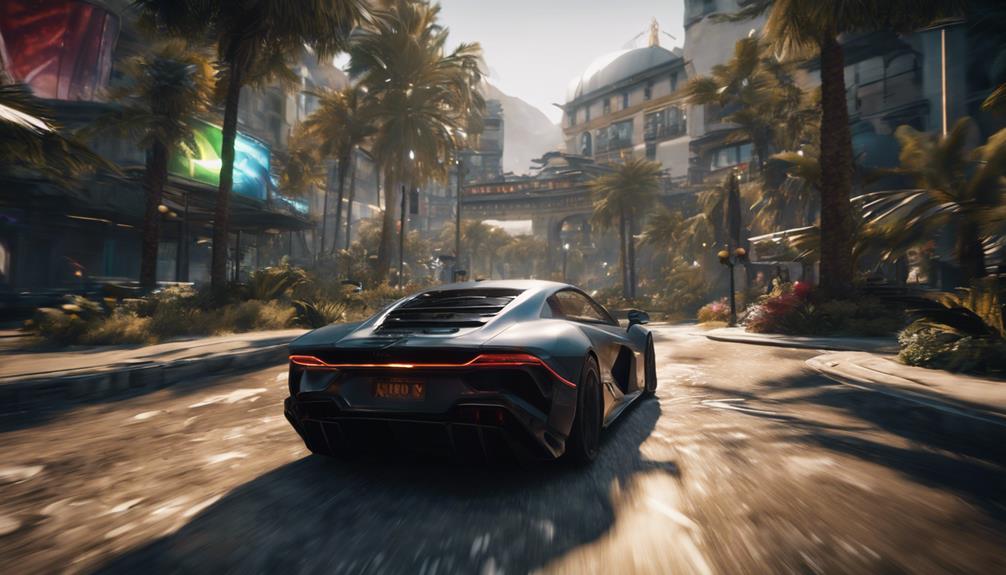
AMD introduces a cutting-edge technique to elevate gaming visual quality and performance with its latest supersampling technology, known as FSR 2.0. This next generation technology is designed to run on Microsoft's Xbox consoles, offering enhanced game resolution and framerates without the need for specialized machine learning hardware.
AMD FSR 2.0 aims to provide a smoother gaming experience by upscaling lower resolution images to higher resolutions, effectively improving overall gameplay visuals. It's worth noting that game developers must integrate FSR 2.0 into their games to fully leverage its benefits.
In addition, this innovative technology will also be supported on specific Nvidia GPUs, such as the GeForce RTX 1070 or higher, expanding its reach beyond AMD hardware. By implementing FSR 2.0, AMD is pushing the boundaries of gaming graphics technology, promising a more immersive and seamless gaming experience for players on both Xbox consoles and supported Nvidia GPUs.
Enhancing GPU Performance With FSR 2.0

Enhancing gaming performance and image quality, the next-gen supersampling technology known as FSR 2.0 revolutionizes GPU capabilities across a variety of hardware platforms. This cutting-edge technology provides significant boosts to GPU performance without the need for specialized machine learning hardware.
With FSR 2.0, both Nvidia and AMD GPUs can take advantage of enhanced gaming experiences. Specifically, specific Nvidia GPUs such as the GeForce RTX 1070 or higher are compatible with FSR 2.0, ensuring improved performance and image quality. On the AMD side, Radeon GPUs like the RX 590, RX 6500 XT, or higher are fully supported by FSR 2.0, offering gamers a seamless way to elevate their gaming experiences.
Quality Modes for Image Enhancement

AMD FSR 2.0 introduces Quality modes that allow users to optimize their gaming experience by choosing between different levels of visual fidelity. These modes, including Ultra Quality, Quality, Balanced, and Performance, cater to varying preferences and hardware capabilities.
Performance Vs Quality
When selecting between the available modes in FSR 2.0, users can customize their gaming experience by balancing performance and image quality according to their preferences.
- Quality Mode: This mode in FSR 2.0 enhances visual fidelity, focusing on improving image quality for a more immersive gaming experience.
- Balanced Mode: Offering a mix of performance and quality, the Balanced mode in FSR 2.0 provides users with a well-rounded approach to gaming.
- Performance Mode: Prioritizing maximum frame rates for smooth gameplay and high FPS, the Performance mode in FSR 2.0 is ideal for competitive gamers seeking top-notch performance.
Players can choose from these three modes to tailor their gaming experience, deciding on the perfect balance between image quality and performance that suits their individual preferences. Whether looking for enhanced visuals, a balanced approach, or maximum performance, FSR 2.0 provides options for gamers to enjoy their favorite titles with the settings that best match their desired gaming experience.
Compatibility With GPUS
FSR 2.0's compatibility with a range of GPUs allows gamers to optimize image enhancement through its Quality Modes. AMD's FidelityFX Super Resolution (FSR) 2.0 technology is tailored to work efficiently with specific graphics cards, ensuring that users can enjoy enhanced visual experiences. By selecting from Quality, Balanced, and Performance modes, gamers can fine-tune their settings based on their preferences and hardware capabilities. For Nvidia GPUs, models like the GeForce RTX 1070 or higher are recommended to maximize performance gains. On the other hand, AMD suggests utilizing Radeon RX 590 or RX 6500 XT GPUs or higher for superior image quality. This compatibility extends to Xbox consoles as well, broadening the accessibility of FSR 2.0 to a wider gaming audience. By leveraging FSR 2.0's capabilities on supported AMD and Nvidia GPUs, game developers can enhance the visual fidelity of their titles, offering players a more immersive gaming experience.
| Graphics Card | Recommended GPU Models |
|---|---|
| Nvidia | GeForce RTX 1070 or higher |
| AMD | Radeon RX 590 or RX 6500 XT or higher |
Boosting Frame Rates With FSR 2.0
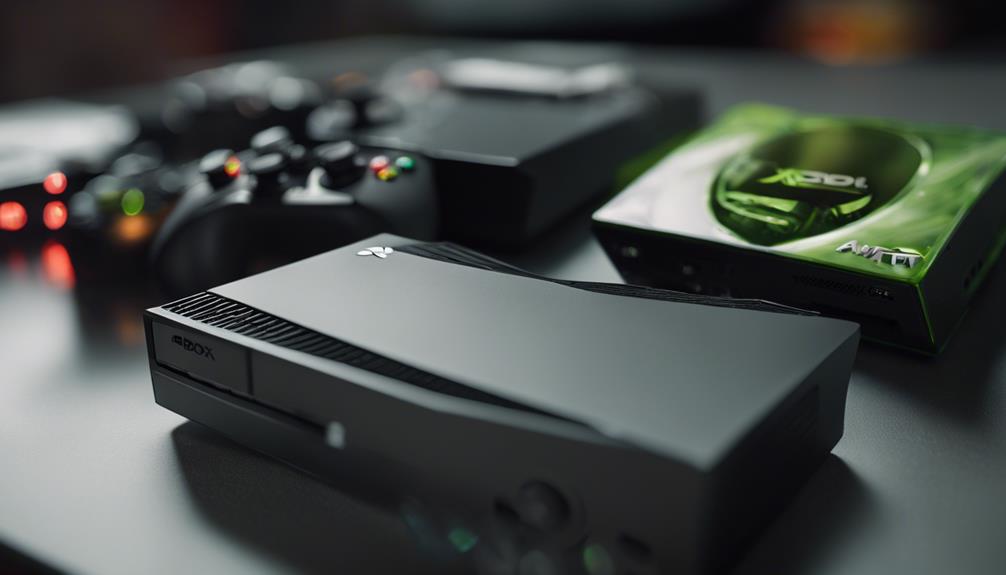
FSR 2.0, the latest iteration of AMD's upscaling technology, promises to boost frame rates to a great extent.
Not only does it enhance gaming performance, but it also brings compatibility to Xbox consoles and specific Nvidia GPUs, like the GeForce RTX 1070 or higher.
Gamers can expect smoother gameplay experiences and improved performance across a wider array of devices, making FSR 2.0 a valuable tool for enhancing the gaming experience.
Enhanced Gaming Performance
Gamers can experience enhanced gaming performance through boosted frame rates with the innovative FSR 2.0 technology. This advancement in graphics technology offers a range of benefits for gamers looking to elevate their gaming experiences:
- Improved Graphics Performance: FSR 2.0 aims to enhance frame rates while maintaining image quality, providing smoother gameplay and visually appealing graphics.
- Compatibility with Nvidia GPUs: With support for specific Nvidia graphics cards like GeForce RTX 1070 or higher, FSR 2.0 opens up opportunities for a broader range of gamers to enjoy improved gameplay.
- Versatile Performance Modes: FSR 2.0 offers Quality, Balanced, and Performance modes, allowing users to customize their gaming experience based on their preferences for graphics and performance.
Compatibility With Xbox
Boosting frame rates with FSR 2.0 on Xbox consoles enhances the gaming experience for a wider audience of players. This technology, fully supported on Xbox consoles, optimizes GPU performance to deliver improved gaming experiences. Game developers utilizing the Xbox Game Development Kit (GDK) can access FSR 2.0, although specific integration details remain limited at this time. The availability of FSR 2.0 on Xbox signifies a significant advancement in enhancing both frame rates and image quality for gamers. With this compatibility, players using Xbox consoles can now benefit from smoother gameplay and enhanced visual fidelity.
| AMD Radeon RX | Nvidia GeForce RTX |
|---|---|
| FSR 2.0 Support | FSR 2.0 Support |
| Enhanced GPU Performance | Enhanced GPU Performance |
| Improved Gaming Experiences | Improved Gaming Experiences |
Nvidia Card Support
With compatibility extending to Nvidia graphics cards, gamers using GPUs like the GeForce RTX 1070 or higher can now experience enhanced frame rates through FSR 2.0. This expanded support from AMD opens up a new sphere of possibilities for Nvidia users, allowing them to leverage the benefits of FSR 2.0 on their existing hardware.
Here are three key points to keep in mind:
- Peak Performance: Nvidia graphics cards such as the RTX 20 series and newer are recommended for peak FSR 2.0 performance. Users with these cards can expect a significant boost in image quality and frame rates when utilizing FSR 2.0.
- Customizable Experience: FSR 2.0 on Nvidia cards offers Quality, Balanced, and Performance modes, providing users with the flexibility to tailor their gaming experience based on their preferences and hardware capabilities.
- Broader Reach: AMD's FSR 2.0 support on Nvidia GPUs expands the technology's reach to a wider range of gaming hardware, fostering inclusivity and enhancing the gaming experience for a broader audience.
Radeon Super Resolution (RSR) Details

Radeon Super Resolution, a key component of AMD's feature set, enhances gaming performance by enabling FSR features in titles lacking native support. RSR, integrated into AMD's drivers, is specifically designed to boost performance in games that do not natively support FSR technology. It is supported on AMD's Radeon RX 5000 GPUs, allowing gamers with these cards to take advantage of improved visual fidelity and smoother gameplay. Below is a table summarizing key details about Radeon Super Resolution:
| Radeon Super Resolution (RSR) | Details |
|---|---|
| Part of AMD's Feature Set | Yes |
| Supports FSR Features | In games lacking native FSR support |
| Compatible GPUs | Radeon RX 5000 series |
RSR's integration into AMD's drivers makes it a convenient solution for those seeking enhanced gaming experiences without needing native FSR support in their games.
Performance Boost for Non-FSR Games
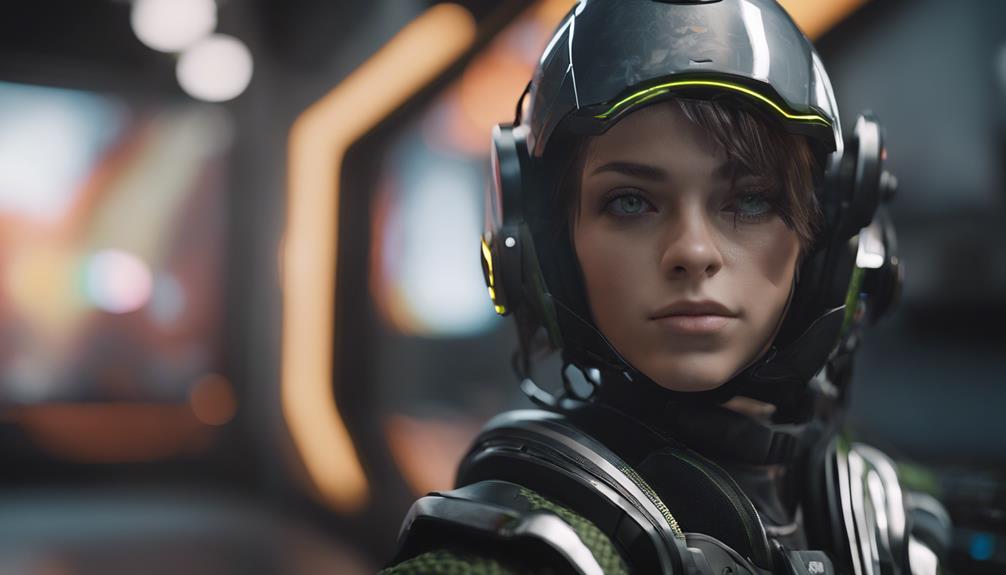
AMD's FSR 2.0 not only boosts performance in games that lack native FSR support but also enhances resolution and frame rates on older Nvidia GPUs and Xbox consoles.
This improvement signifies a significant performance increase even in titles without FSR integration, promising smoother gameplay and improved visuals.
The potential for wider adoption of this technology highlights its adaptability and benefits for a broader range of games and platforms.
Improved Gaming Performance
FSR 2.0 delivers a significant boost in gaming performance for titles that don't inherently support the technology, enhancing both frame rates and image quality. This improvement is achieved through the utilization of machine learning algorithms to upscale lower-resolution images, resulting in a smoother and more visually appealing gaming experience.
Here are three key points highlighting the benefits of FSR 2.0 for improved gaming performance:
- Enhanced Image Quality: FSR 2.0 leverages advanced algorithms to enhance the visual quality of games, making textures and details appear sharper and more defined, even in titles that don't natively support the technology.
- Increased Frame Rates: By optimizing GPU performance, FSR 2.0 boosts frame rates, leading to a smoother gameplay experience with reduced stuttering and screen tearing, contributing to overall gameplay fluidity.
- Compatibility with Nvidia GPUs: FSR 2.0 is compatible with specific Nvidia GPUs, such as the GeForce RTX series, allowing a broader range of gamers to enjoy the benefits of improved gaming performance on supported hardware.
Compatibility With Older GPUS
Older Nvidia GPUs, such as the GeForce GTX 1070 and above, can expect a performance boost from FSR 2.0, enhancing visual quality and frame rates even in non-FSR games. With the introduction of FSR 2.0, older GPUs that don't inherently support FSR technology will still reap the benefits of improved image quality and smoother gameplay.
This compatibility extends to a range of Nvidia graphics cards, ensuring that a broader spectrum of users, including those with older GPUs like the GTX 1070, can leverage FSR 2.0 for enhanced gaming experiences. By incorporating FSR 2.0, players utilizing older Nvidia GPUs can witness significant advancements in visual fidelity and frame rates, not only in FSR-enabled games but also in other titles that don't natively support this feature.
This advancement in compatibility underscores AMD's commitment to providing performance enhancements that cater to a wider user base, including owners of older Nvidia graphics cards.
Potential for Wider Adoption
With the potential to enhance performance in games that don't natively support FSR, FSR 2.0 opens up new avenues for improved gaming experiences. The technology's ability to provide super resolution and boost frame rates and image quality in non-FSR games signifies its potential for wider adoption, expanding its impact across various titles.
Moreover, FSR 2.0's compatibility with Xbox and Nvidia GPUs not only offers performance enhancements to a broader range of gamers but also opens up opportunities for more players to experience improved visuals and smoother gameplay. Essentially, the wider adoption of FSR 2.0 could revolutionize the gaming landscape by increasing the number of titles that provide enhanced gaming experiences without the need for specific game optimizations.
This advancement in super resolution technology has the potential to redefine how gamers interact with their favorite titles, offering a more immersive and visually pleasing experience across a multitude of games.
Expanding Reach of Innovative Technologies
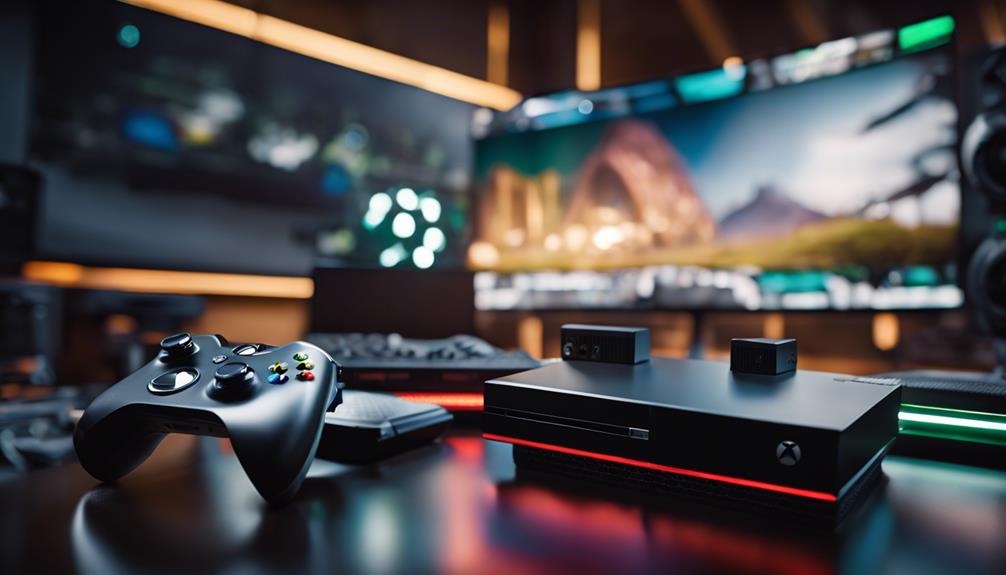
In the ever-evolving landscape of gaming technology, the reach of innovative advancements continues to expand rapidly. AMD's FidelityFX Super Resolution 2.0 (FSR 2.0) stands out as a new technology that does not rely on specialized machine learning hardware to enhance game resolution and framerates on Xbox consoles and select Nvidia GPUs like the GeForce RTX 1070 or higher. By eliminating the need for dedicated machine learning hardware, FSR 2.0 opens up new possibilities for a wider audience of gamers to experience improved performance and image quality without additional hardware investments. This advancement signifies a significant step in advancing gaming experiences across different platforms, bridging the gap between console and PC gaming. Below is a table showcasing the compatibility of FSR 2.0 with Xbox and specific Nvidia GPUs:
| Xbox Consoles | Nvidia GPUs | Other Platforms | |
|---|---|---|---|
| FSR 2.0 | Supported | GeForce RTX 1070 or higher | PC |
FSR 2.0 on Xbox Consoles
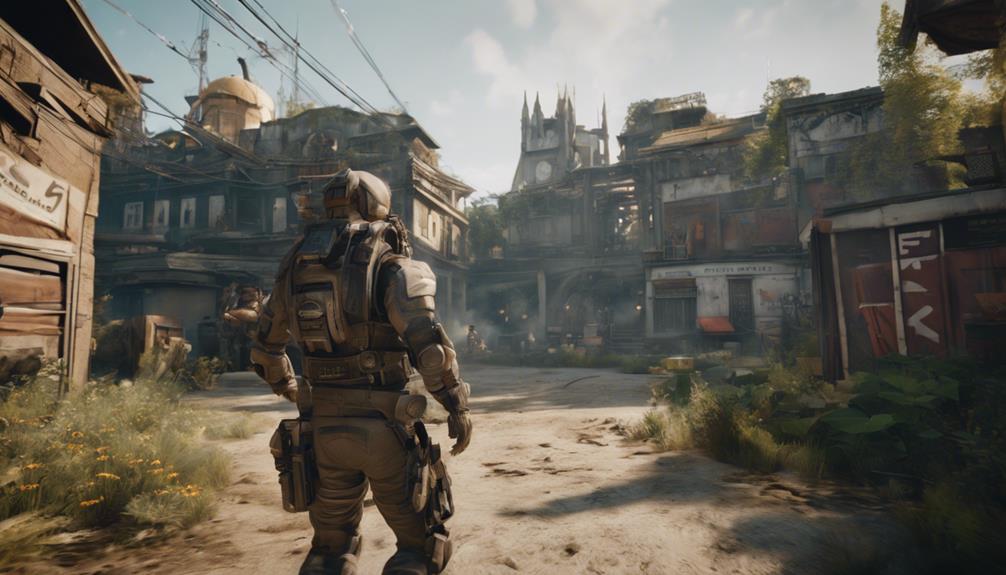
Gamers on Xbox consoles can now experience enhanced performance and image quality with the seamless integration of FSR 2.0. This Super Resolution technology leverages machine learning to deliver a remarkable gaming experience. Here are three key points worth noting:
- Expanded Reach: FSR 2.0 is fully supported on Xbox consoles, marking a significant advancement in gaming technology by bringing this cutting-edge feature to console gamers.
- Developer Integration: Game developers will have access to FSR 2.0 through the Xbox GDK, enabling them to integrate this technology into Xbox titles for optimized performance and visual fidelity.
- Improved Experience: With FSR 2.0's compatibility, Xbox gamers can expect smoother gameplay, enhanced graphics, and a more immersive gaming experience, showcasing the power of this innovative technology.
The incorporation of FSR 2.0 on Xbox consoles underscores a new era of gaming where performance and image quality are supercharged through advanced machine learning algorithms.
Supported Nvidia Graphics Cards List

Nvidia graphics card users can expect compatibility with FSR 2.0 on models like the GeForce RTX 1070 and higher. Additionally, Nvidia GPUs such as the RTX 2070, 2080, and the 30 series are anticipated to support FSR 2.0, providing users with performance enhancements and improved image quality.
The flexible gaming experience offered by FSR 2.0 extends to a range of Nvidia graphics cards, aiming to enhance gameplay across various titles. By integrating FSR 2.0 on supported Nvidia GPUs, users can enjoy the benefits of this technology on their systems.
This compatibility ensures that Nvidia graphics card users can leverage FidelityFX Super Resolution to optimize their gaming experience, benefiting from increased performance and visual fidelity. Whether gaming on an RTX 1070 or the latest 30 series GPU, users can count on the advantages that FSR 2.0 brings to their gaming setups.
Optimizing GPU Performance Across Platforms

Optimizing GPU performance across platforms is essential for ensuring a consistent gaming experience on different hardware setups. Game developers must focus on cross-platform GPU optimization to maintain performance consistency and deliver quality gameplay.
Cross-Platform GPU Optimization
Cross-platform GPU optimization aims to enhance gaming performance across various platforms through the integration of FSR 2.0 technology. This technology, which includes upscaling features, offers benefits such as enhanced image quality and smoother frame rates.
Game developers can guarantee a better gaming experience for console and PC gamers by incorporating FSR 2.0 into their games. The customizable quality modes provided by FSR 2.0, including Ultra Quality, Quality, Balanced, and Performance, allow users to tailor their gaming experience to their preferences.
With full support on Microsoft's Xbox consoles and compatibility with specific Nvidia GPUs like the GeForce RTX 1070 or higher, FSR 2.0 ensures improved performance across different gaming platforms. By leveraging this technology, gamers can expect a more immersive and optimized gaming experience, regardless of the platform they choose to play on.
Performance Consistency on Hardware
FSR 2.0's integration across different platforms guarantees consistent enhancement of GPU performance for improved gaming experiences. By leveraging machine learning algorithms, FSR 2.0 secures that users receive a smooth and visually appealing gameplay experience across a range of devices.
This technology offers users the flexibility to choose from Ultra Quality, Quality, Balanced, and Performance modes, tailoring the performance to their preferences. Moreover, the inclusion of FSR 2.0 on Xbox consoles expands its reach, promising a steady level of performance optimization for console gamers.
To achieve top-notch results, AMD recommends specific AMD and Nvidia GPUs that work seamlessly with FSR 2.0, emphasizing the importance of hardware compatibility for maximizing the benefits of this technology.
With FSR 2.0's commitment to performance consistency on various hardware configurations, gamers can expect enhanced frame rates and image quality, ultimately elevating their gaming experiences.
Different Quality Modes Explained

When selecting a quality mode in FSR 2.0, users can tailor their gaming experience to prioritize either improved visual fidelity, a balanced performance-image quality mix, or enhanced frame rates.
- Quality mode emphasizes enhanced visual fidelity for a more detailed and immersive gaming experience.
- Balanced mode strikes a middle ground by offering a mix of performance and image quality, ensuring a harmonious gameplay experience.
- Performance mode focuses on maximizing frame rates to deliver smoother and more fluid gameplay, ideal for competitive gamers or those seeking the highest levels of performance.
Users have the flexibility to choose the mode that best aligns with their preferences, whether they value stunning visuals, a balanced gaming experience, or the highest frame rates.
Image Quality Enhancement With FSR 2.0
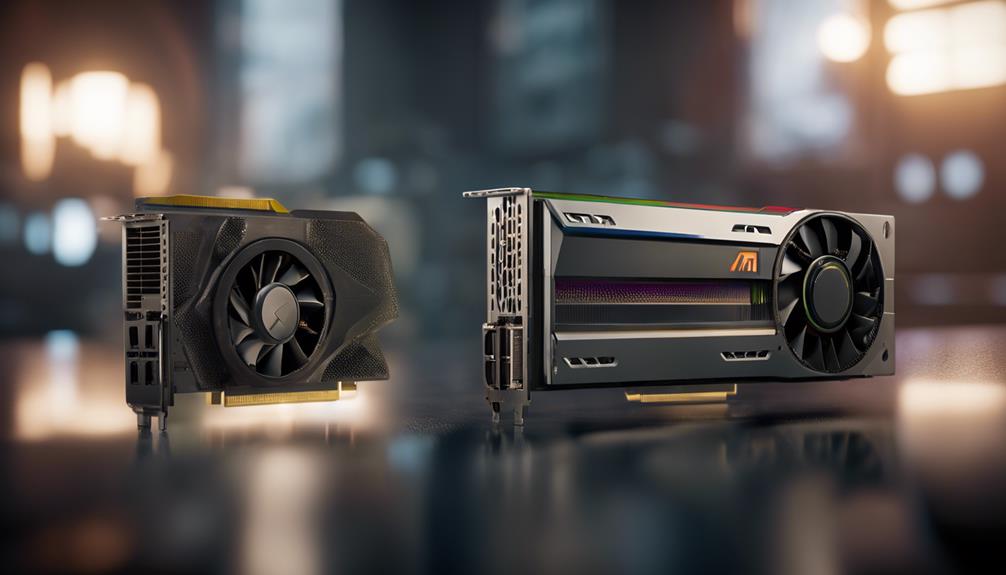
Enhancing image quality through FSR 2.0's advanced technology promises a superior visual experience compared to its predecessor. The technology utilizes machine learning to optimize anti-aliasing based on temporal data, resulting in improved visuals. AMD's FSR 2.0 offers various quality modes that cater to different preferences, ensuring enhanced visual fidelity across a wide range of gaming experiences. In the domain of image enhancement, FSR 2.0 competes closely with Nvidia's DLSS 2.0, showcasing AMD's commitment to providing cutting-edge solutions for gamers. The compatibility of FSR 2.0 with both AMD and Nvidia graphics cards further amplifies its accessibility, allowing a broader user base to benefit from its image enhancement capabilities. This advancement signifies a significant leap in technology, enabling gamers to enjoy visually stunning gameplay without compromising performance.
| FSR 2.0 Image Quality Enhancement | |
|---|---|
| Advanced machine learning technology | Superior visual experience compared to FSR 1.0 |
| Optimized anti-aliasing based on temporal data | Competes closely with Nvidia's DLSS 2.0 |
| Various quality modes for enhanced visual fidelity | Compatibility with AMD and Nvidia graphics cards |
Boosting Frame Rates Effectively

AMD's FSR 2.0 technology not only enhances image quality but also focuses on effectively boosting frame rates for a smoother gaming experience. This innovative approach combines machine learning with advanced rendering techniques to optimize performance on compatible devices.
When it comes to Nvidia GPUs, FSR 2.0 offers significant benefits, especially on models like the GeForce RTX 1070 or higher. By leveraging machine learning algorithms, FSR 2.0 can dynamically adjust the rendering resolution to prioritize frame rate improvements while maintaining a visually appealing gaming environment. This intelligent system allows for a more responsive and fluid gameplay experience without sacrificing the overall graphical fidelity.
Game developers can now harness the power of FSR 2.0 to integrate this technology seamlessly into their titles, providing enhanced gaming experiences on Xbox consoles and supported Nvidia GPUs.
Frequently Asked Questions
Does AMD FSR 2.0 Work on Nvidia?
AMD's FSR 2.0 doesn't work on Nvidia graphics cards. FSR 2.0 is AMD's technology designed to enhance performance on AMD GPUs.
While Nvidia users can benefit from features like resolution upscaling and framerate improvements through other Nvidia-specific technologies, FSR 2.0 isn't compatible with Nvidia GPUs.
Developers need to implement Nvidia-specific solutions for best performance on Nvidia graphics cards.
Does FSR Work on All Graphics Cards?
FSR technology, like FSR 2.0, isn't universally compatible with all graphics cards. It's designed to work efficiently with specific AMD and Nvidia GPUs. Utilizing GPUs outside of the supported range may result in suboptimal performance due to longer processing times and reduced image quality.
To fully leverage the benefits of FSR, ensuring compatibility with the recommended GPUs is essential for an enhanced gaming experience.
How Do I Enable FSR on My AMD Graphics Card?
To activate FSR on your AMD graphics card, make sure you've updated to the latest driver.
In the Radeon Software app, go to the Graphics tab and locate the Image Sharpening section.
Enable FidelityFX Super Resolution (FSR) and choose your preferred mode (Quality, Balanced, or Performance).
Does Xbox Use Nvidia Gpu?
Xbox consoles don't use Nvidia GPUs; they rely on custom AMD hardware for graphics processing. This distinction is important as FSR 2.0, designed by AMD, is tailored to run smoothly on Xbox consoles equipped with AMD GPUs.
While Nvidia graphics cards are supported by FSR 2.0 for PC gaming, the integration on Xbox doesn't involve Nvidia GPUs. As a result, Xbox systems don't utilize Nvidia GPUs for their gaming experience.
Conclusion
Contrary to popular belief, AMD has confirmed that FSR 2.0 will indeed be compatible with Xbox and certain Nvidia graphics cards. This technology aims to enhance image quality and boost frame rates effectively across platforms.
It's essential to stay informed and rely on verified sources to correct any misinformation regarding the compatibility and functionality of FSR 2.0.
Stay informed and enjoy the benefits of this next-gen supersampling technology on your devices.
